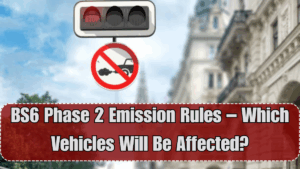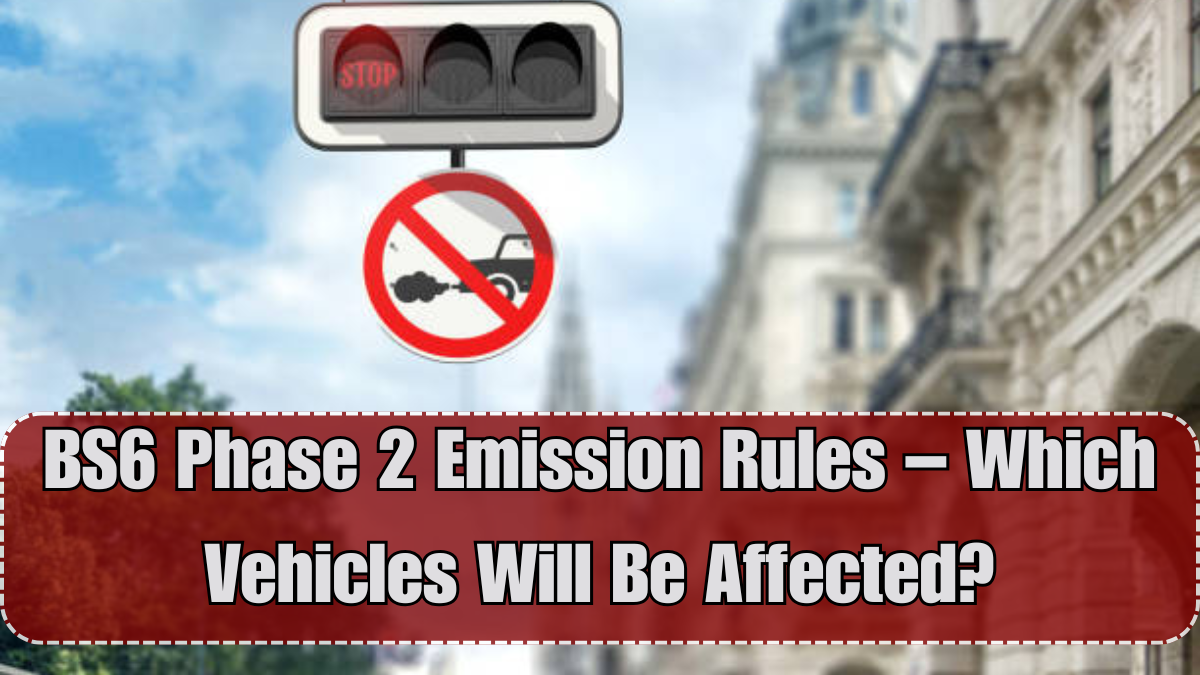The BS6 phase 2 vehicle compliance India regulations officially came into force in 2025, marking a crucial evolution in India’s efforts to curb vehicular pollution. This phase, also known as Real Driving Emissions (RDE), goes beyond lab testing and introduces on-road emission checks for all passenger and commercial vehicles sold after April 1, 2025.
Under the new auto rules, all car manufacturers are now required to ensure that their vehicles meet emission standards under actual driving conditions — not just controlled laboratory environments. This update brings Indian regulations in line with European standards (Euro 6d), reinforcing the country’s commitment to a cleaner environment and stricter India pollution law.
If you own a BS6 vehicle or plan to buy a new car this year, here’s what you need to know about how BS6 phase 2 vehicle compliance India works and which vehicles will be directly affected.

What Has Changed in BS6 Phase 2?
The first phase of BS6, implemented in April 2020, focused on reducing emissions like NOx, PM (Particulate Matter), and hydrocarbons under lab conditions. However, the BS6 phase 2 vehicle compliance India update introduces several technical and compliance upgrades.
Here’s what’s new:
-
Real Driving Emissions (RDE) monitoring using onboard diagnostic (OBD) systems
-
Mandatory OBD-II upgrades to track engine performance and emissions in real-time
-
Portable Emission Measurement System (PEMS) used during road tests
-
Emission control even during cold start and high-altitude driving
-
Enhanced regulations for petrol, diesel, and even CNG vehicles
This phase ensures that vehicles remain clean on the road — not just during certification tests.
Which Vehicles Must Comply?
The BS6 phase 2 vehicle compliance India norms apply to:
-
All passenger cars (hatchbacks, sedans, SUVs) sold after April 1, 2025
-
Two-wheelers with engine capacities above 125cc
-
Light commercial vehicles (goods carriers, pick-up vans)
-
Medium-duty and heavy-duty diesel vehicles
-
Buses and public transport fleet vehicles
| Vehicle Type | Fuel Type | BS6 Phase 2 Requirement |
|---|---|---|
| Hatchbacks & Sedans | Petrol/Diesel | Must include RDE-compliant engine & OBD-II |
| Two-Wheelers (>125cc) | Petrol | Modified ECU, lambda sensors, OBD |
| Pick-Up Vans | Diesel/CNG | PEMS testing, upgraded catalytic systems |
| Buses/Heavy Trucks | Diesel | Advanced DPFs, SCR systems, real-time tracking |
Vehicles sold before April 2025 are not required to retrofit unless mandated for specific pollution zones.
How Car Buyers and Owners Are Affected
If you’re purchasing a new vehicle in 2025, your car will already be BS6 phase 2 compliant. However, these updated auto rules bring both benefits and cost implications.
Key Impacts:
-
Slightly higher upfront cost due to upgraded hardware and sensors
-
Better fuel efficiency through optimized engine calibration
-
Reduced emissions, especially NOx and particulate matter
-
Lower maintenance in the long term due to enhanced onboard monitoring
-
Compliance with upcoming city-level green regulations
Car owners in metro cities may also see India pollution law enforcement through strict pollution under control (PUC) checks and city-specific driving restrictions.
Why BS6 Phase 2 Is a Big Deal for India
India has been among the world’s most polluted countries, with transport contributing significantly to urban air quality degradation. The BS6 phase 2 vehicle compliance India policy is a massive leap in controlling real-world emissions and improving public health.
It supports India’s goals of:
-
Cleaner urban air quality
-
Safer, more efficient engines
-
Better global alignment with European and US emission standards
-
Reduction in vehicle-linked respiratory illness cases
With the new India pollution law becoming tighter, the automobile industry is also being pushed toward EV and hybrid vehicle innovation, aligning with green transport goals.
What Should Buyers and Dealers Do Now?
For vehicle buyers, it’s essential to:
-
Confirm BS6 Phase 2 compliance before buying any new vehicle
-
Ask for updated OBD certificate and compliance label
-
Choose manufacturers that offer full transparency on emission control features
-
Understand fuel type impact — some petrol cars are easier to maintain post-BS6
-
Stay updated on annual PUC rules in your city
Dealers must ensure that no BS6 Phase 1 vehicles are sold post-April 2025, and that inventory is cleared or upgraded.
FAQs
What is BS6 phase 2 vehicle compliance India?
It refers to the second level of BS6 emission norms implemented in 2025 that include real-time driving emission monitoring through onboard diagnostics and RDE testing.
Does it apply to existing vehicles?
No, only vehicles manufactured and sold after April 1, 2025, need to comply with the new BS6 Phase 2 standards.
Are diesel cars affected more than petrol ones?
Diesel vehicles face stricter emission norms and need additional technology like DPF and SCR to meet India pollution law requirements.
Will my car cost more under BS6 phase 2?
Yes, vehicles may cost ₹15,000 to ₹50,000 more due to upgraded emission control systems under the new auto rules.
Are two-wheelers included in BS6 phase 2?
Yes, especially two-wheelers above 125cc must now include sensors and upgraded OBD-II systems for full BS6 phase 2 vehicle compliance India.
Click here to know more.
